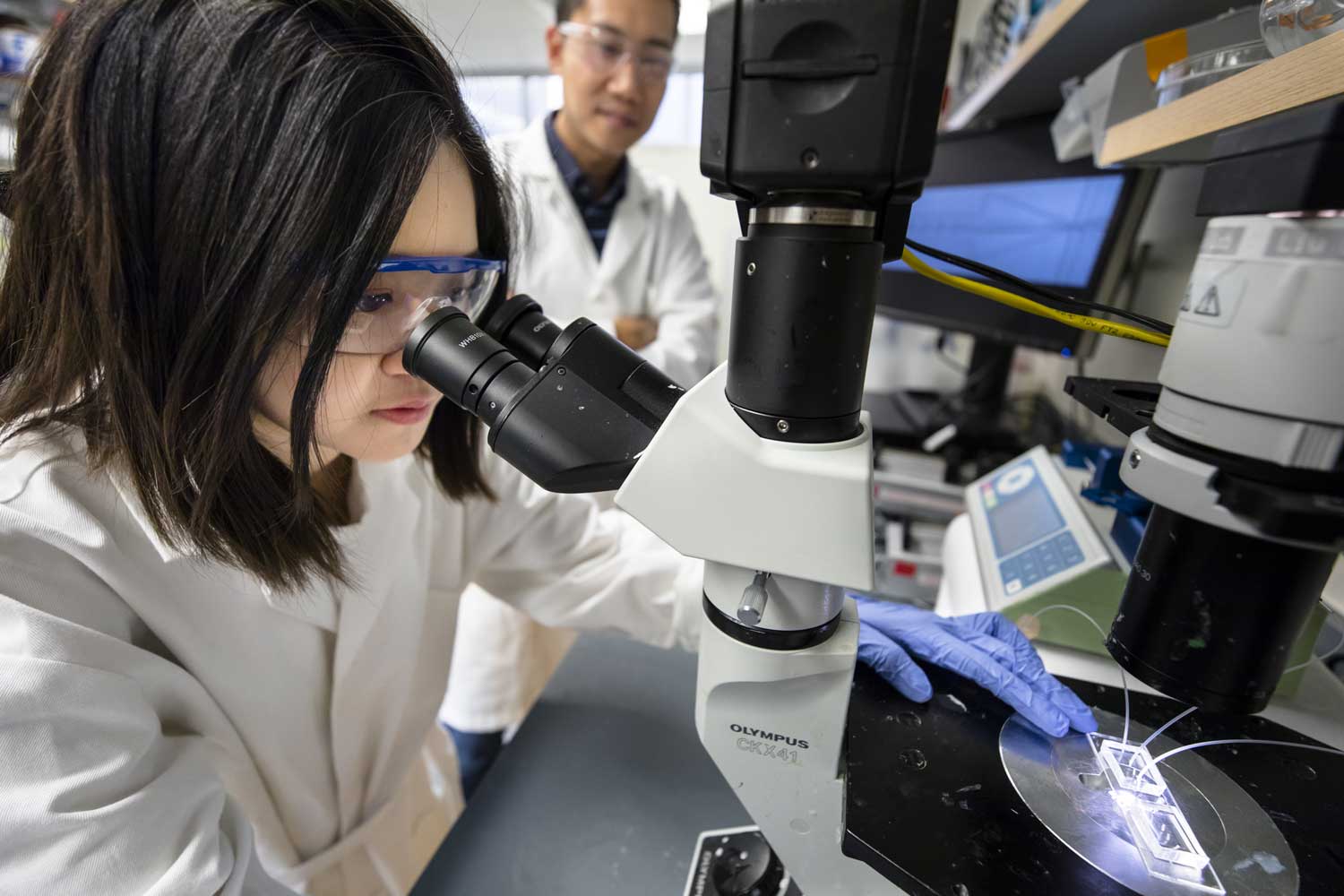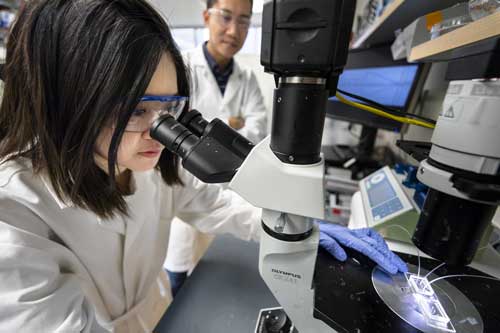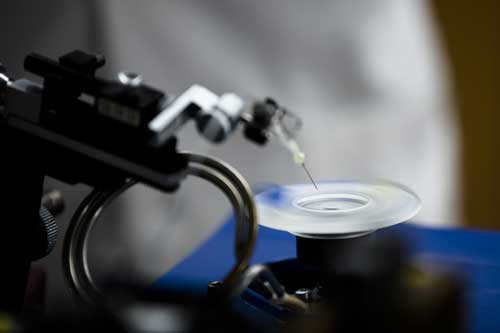

University of Michigan researchers will lead a federal, multi-institute project tasked with building synthetic cells, and the first hurdle will be neurons—the body’s means of transmitting nerve impulses.
Funded by the National Science Foundation, the project will involve seven research institutions across the U.S.
 Yen-Yu Hsu, mechanical engineering graduate student, demonstrates use of a PDMS microfluidic device for generating double emulsion templated vesicles for a synthetic cell model. Photo: Evan Dougherty
Yen-Yu Hsu, mechanical engineering graduate student, demonstrates use of a PDMS microfluidic device for generating double emulsion templated vesicles for a synthetic cell model. Photo: Evan Dougherty
NSF’s Understanding the Rules of Life initiative on Building a Synthetic Cell is among the first major, US-government-backed efforts targeting cell construction. Its goal is to “understand what constitutes a living system (and) to identify the truly essential functions of cells.”
This type of research could lead to medical applications such as replacing neurons in damaged spinal cords, and help to develop computational models for dealing with biological materials. And U-M’s team will coordinate the effort, with Allen Liu, an associate professor of mechanical engineering, serving as principal investigator.
For U-M engineers and their partners, the challenge is to recreate the communication process that occurs in neurons, cells located in the brain and throughout the body’s nervous system.
Neurons take in chemical signals, convert them to electrical signals that are passed along the threadlike axon, which transports impulses through the cell, and then converts those back into chemical signals to be transmitted to the next cell. It’s a complex, but crucial, part of how we operate.
“A neuron allows you to think, allows you to process information, process chemical information,” Liu said. Researchers will work from the “bottom-up”, taking living and non-living materials like proteins and lipids to construct a working neuron. By taking that approach, they hope to understand the minimal components required to recreate the functions of the neuron.
 Demonstration of a cDICE (continuous droplet interface crossing encapsulation) setup used to generate lipid bilayer vesicles for a synthetic cell model in the lab of Allen Liu. Photo: Evan Dougherty/University of Michigan Engineering
Demonstration of a cDICE (continuous droplet interface crossing encapsulation) setup used to generate lipid bilayer vesicles for a synthetic cell model in the lab of Allen Liu. Photo: Evan Dougherty/University of Michigan Engineering
Channel proteins selectively transport ions with the cell. Researchers will take the DNA of those proteins and transcribe them into RNA to create new channel proteins. In the lab, those new proteins will be placed in a cell-like structure called lipid bilayer vesicle, recreating a natural cell.
“It’s the opposite approach to what you see in areas like tissue engineering – where you take living cells and you try to construct a multi-cellular scaffold,” Liu said. “That approach has you working with living matter. Here, we’re starting with inanimate things – things you wouldn’t call living, like a protein, or a lipid.”
The team will also look to develop a new form a neuronal communication using engineered proteins – one that might shorten the electrical to chemical to electrical signal chain.
Each area of research will be supported by computational modeling. And the project includes a sociological component seeking to investigate how the public perceives synthetic cell research.
Along with U-M, representatives from the following universities will be working on the neuron project in areas of specialized expertise:
The Liu Lab: http://liulab.engin.umich.edu/